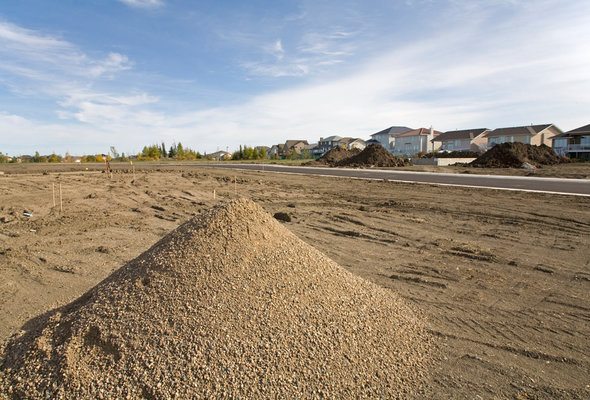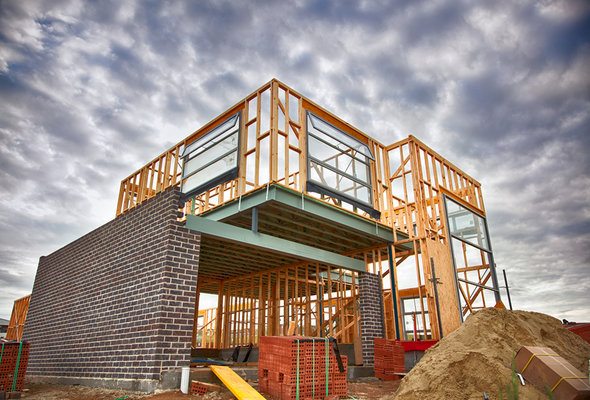A land loan is an option for prospective homeowners who want to buy a piece of land and then build their own home there. Land loans aren’t as common as mortgages, so you may have to shop around a bit to find one. There are also different types of land loans, so you’ll need to figure out which is the best choice for your situation. Additionally, you should have a general idea of the kinds of costs that you’ll encounter when you take on one of these projects. Here’s what you need to know.
Be sure you have a strong financial plan in place before you take on a land loan. Talk to a financial advisor today.
What Is a Land Loan?
A land loan is exactly what it sounds like: an amount of money that’s used to finance the purchase of property. In general, land loans are much riskier than a typical home mortgage, which is why lenders have more stringent requirements for them. In addition, high down payments and interest rates often accompany land loans.
Here are three types of land loans:
- Lender land loan: This is the most common type of land loan, as they come from typical lenders like banks and credit unions. In general, financial institutions that are somewhere near the property are your best bet.
- USDA Rural Housing Site loan: The U.S. Department of Agriculture, or USDA, offers a few different types of loans for individuals who want to buy land in a rural area to build their primary residence. These are available for low-income individuals and families. Typically, USDA land loans are for two years, and rates are favorable.
- SBA 504 loan: If you want to buy land for business purposes, the Small Business Administration can provide you with a loan. Terms are usually either 10 or 20 years, with the loan funding being divided between you, the SBA and a third-party lender.
What Kind of Land Loan Does Your Property Qualify for?
Before applying for a land loan, it’s a good idea to find out whether the property will require an improved land loan or a raw land loan.
Improved land has already been developed for use in some capacity. In other words, it provides access to certain services, like water, roads or sewers. These features make improved land loans less risky for lenders. That means obtaining a loan for improved land shouldn’t be too difficult.
Getting a loan for raw land, on the other hand, probably won’t be so easy. Building a house on an empty plot of land will require a lot of time, planning and money. That’s why lenders typically feel less comfortable approving borrowers for raw land loans. Folks who can qualify for this type of financing often end up with high interest rates and short repayment terms.
How to Get a Land Loan

Not all banks and credit unions provide land loans. So you’ll need to shop around to ensure you’re getting the most favorable loan terms. Working with a local lender might also be worth considering. That’s because he or she is likely more familiar with the land you’re planning to buy. If you are a veteran, keep in mind that you may be eligible for a VA land loan.
During your loan application process, your lender will review your credit score and your credit history before setting your loan terms and your interest rate. Besides making a down payment, be prepared to cover the cost of a land survey, an appraisal and possibly an attorney’s services.
Your lender may also want to know what you intend to do with the land you’re buying. That’s one way for them to determine whether to approve your loan application. Additionally, your lender may ask you to submit a written statement confirming that you will begin construction on a certain date.
Alternatives to a Land Loan
In some cases borrowers who need land loans have to make at least a 50% down payment. If you can’t afford to put down that much money, you may need to look into other financing options.
For example, if you have an existing primary place of residence, you could apply for a cash-out refinance, a home equity loan or a home equity line of credit (HELOC). By going this route, you can utilize your home as collateral, which should help you secure a more favorable interest rate.
You could also explore whether the individual or company selling the land would be open to a short-term financing arrangement. This could help to soften the blow of the purchase, though setting up a financing deal may be difficult with a non-lender.
Bottom Line

Building a home from the ground up may seem like a lot of work. But in the end, you can feel satisfied knowing that you have the home you’ve always dreamed of owning. If you want to use a loan to finance the purchase of a piece of land, you’ll need to have good credit and a specific plan for how you’re going to use the land you’re buying. It’s also important to find out whether the city plans to develop the area surrounding your land in the future to build a school or a freeway, for example.
Tips for Buying a Home
- Before you drop the money on land or a new home, consider your long-term financial plan. A financial advisor can help you create a financial plan to reach your homebuying goals. Finding a financial advisor doesn’t have to be hard. SmartAsset’s free tool matches you with up to three vetted financial advisors who serve your area, and you can interview your advisor matches at no cost to decide which one is right for you. If you’re ready to find an advisor who can help you achieve your financial goals, get started now.
- Once mortgage or land loan payments are a part of your financial life, you’ll need to account for them in your budget. Use SmartAsset’s free budgeting tool to create a budget for you and your family.
Photo credit: iStock.com/jandrielombard, iStock.com/Dougall Photography, iStock.com/Erik Khalitov
